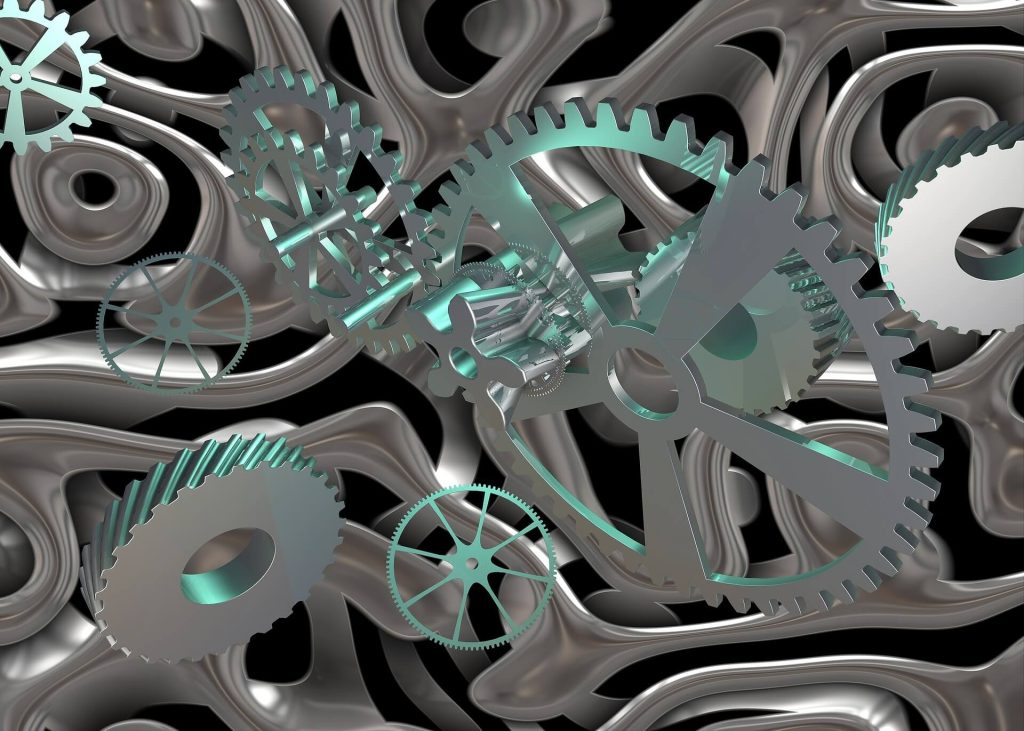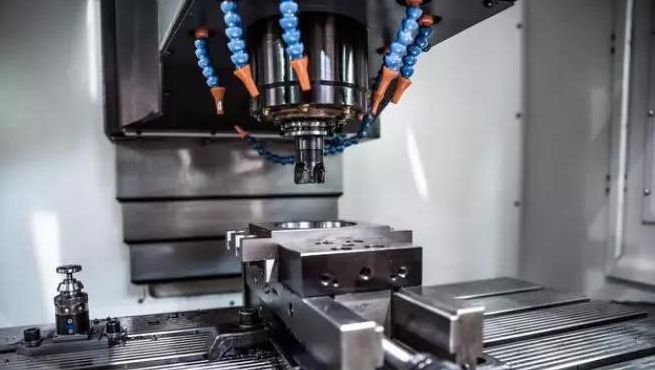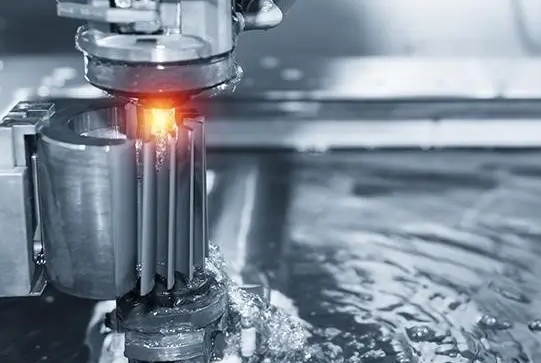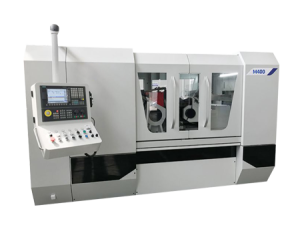Precision machining is the heartbeat of modern manufacturing. It’s a process that allows us to create incredibly detailed and accurate parts, which are essential in industries ranging from aerospace to medical devices. Imagine trying to build a jet engine or a surgical tool without the ability to precisely shape metal to within a micron’s accuracy—that’s where precision machining comes in.
We’ll take you through the fundamentals, explore various techniques, and give you a detailed walkthrough of the CNC precision machining process, ensuring you have all the knowledge you need to appreciate and leverage this powerful technology.
What is Precision Machining
Precision machining is a process that involves removing material from a workpiece while holding close tolerance finishes, so each part meets the exact design specifications.
It’s not just about hitting the target size—it’s about making sure every piece fits perfectly into its intended role, whether that’s in an aircraft, a car, or even inside the human body. To understand the precision machining process, you need to understand tolerances and surface finishes, which define the accuracy and quality of the final product.
Why Precision Matters
In manufacturing, precision is not a luxury—it’s a necessity. For example, in the aerospace industry, even the smallest deviation in a component’s dimensions could lead to catastrophic failures. That’s why parts like turbine blades and engine components are machined to incredibly tight tolerances, sometimes within just a few microns (a micron is one-millionth of a meter).
According to a report from Grand View Research, the global precision machining market size was valued at USD 77.72 billion in 2020 and is expected to expand at a compound annual growth rate (CAGR) of 6.9% from 2021 to 2028. This growth underscores the increasing demand for precision components in high-stakes industries like aerospace, defense, and healthcare.
The Basics of Precision Machining
To understand precision machining, you need to start with its history and evolution.
History and Evolution
Precision machining has come a long way from the days of manual lathes and milling machines. The introduction of Computer Numerical Control (CNC) in the mid-20th century revolutionized the field, allowing for unprecedented levels of accuracy and repeatability.
Early machine tools were hand-cranked, and operators relied heavily on their skill and experience to get the job done. But as the demand for more complex and precise parts grew, so did the need for better machines. That’s when CNC machines came into play. They use computer programming to control the movement of the tools, so each cut is precise and consistent.
Key Concepts
- Tolerances: Tolerances in machining refer to the allowable deviation from the specified dimensions of a part. Tighter tolerances mean less deviation, which is critical in high-precision industries.
- Surface Finish: This refers to the texture of a part’s surface after machining. A smoother surface finish is often required in applications where friction and wear are concerns, such as in bearings or seals.
- Material Properties: The choice of material significantly affects the machining process. Metals like steel, aluminum, and titanium are commonly used because of their strength and machinability. However, plastics, composites, and advanced materials like ceramics and alloys are also critical in specialized applications.
Types of Machines and Tools
- CNC Machining Centers: These versatile machines can perform multiple operations, including milling, drilling, and tapping, in a single setup.
- Lathes: Used primarily for turning operations, lathes rotate the workpiece while a cutting tool shapes it.
- Grinders: Essential for achieving high surface finishes, grinders use abrasive wheels to remove small amounts of material.
- EDM (Electrical Discharge Machining): A non-traditional machining process that uses electrical discharges to shape hard materials like titanium and carbide.
Common Materials Used
- Metals: Steel, aluminum, and titanium are widely used because they offer a good balance of strength, weight, and machinability.
- Plastics and Composites: These materials are increasingly used in industries like automotive and aerospace because of their lightweight properties.
- Advanced Materials: Ceramics and specialized alloys are used in high-performance applications where traditional materials might fail.

Precision Machining Techniques
Precision machining encompasses various techniques, each with its strengths and ideal applications.
Turning
Turning is one of the most basic machining processes, where the workpiece is rotated while a single-point cutting tool removes material. This technique is commonly used to create cylindrical parts such as shafts, bearings, and bushings.
- Applications: Turning is ideal for producing parts with rotational symmetry, such as gears and pulleys.
- Typical Parts Produced: Axles, shafts, and other round components.
Milling
Milling involves the use of rotating multi-point cutting tools to remove material from a workpiece. They come in various configurations, including horizontal, vertical, and multi-axis setups.
- Difference between Horizontal and Vertical Mill: Horizontal milling machines have a horizontally oriented spindle, which is ideal for cutting large and heavy workpieces. Vertical milling machines, on the other hand, have a vertically oriented spindle, which makes them better suited for precision work on smaller parts.
- 3-axis, 4-axis, and 5-axis Mill Machine: The number of axes refers to the directions in which the cutting tool can move. More axes allow for more complex shapes and finer details to be machined.
Grinding
Grinding is used to achieve very high surface finishes and precise dimensions. It involves an abrasive wheel that removes small amounts of material from the workpiece.
- Importance: Grinding is critical when you need the highest level of precision and surface finish, especially in applications like aerospace and tool manufacturing.
- Types of Grinding: Surface grinding, cylindrical grinding, and centerless grinding each offer different capabilities for specific applications.
EDM (Electrical Discharge Machining)
EDM is a non-contact machining process that uses electrical discharges (sparks) to erode material from a workpiece. This technique is especially useful for hard materials and complex shapes that are difficult to machine using traditional methods.
- How EDM Works: EDM machines create an electrical spark between a wire or electrode and the workpiece, gradually eroding the material along the desired path.
- Advantages and Limitations: EDM can machine very hard materials with excellent precision, but it’s a slower process and can be more expensive than traditional machining.
Laser Machining
Laser machining uses a focused laser beam to cut, engrave, or otherwise modify materials. It’s highly precise and is often used in applications requiring fine details or micro-machining.
- Precision Cutting: Laser machining can achieve very tight tolerances and intricate designs, making it ideal for industries like electronics and medical devices.
- Applications: Micro-machining, cutting intricate patterns, and creating small holes.
Step-by-Step Guide to CNC Precision Machining
To help you understand the process of CNC precision machining, I’ve broken it down into a step-by-step guide.
Step 1: Designing the Part
The first step in CNC precision machining is designing the part using CAD (Computer-Aided Design) software. This is where everything begins. Engineers create a digital blueprint of the part, making sure the design meets all functional and aesthetic requirements.
– The Importance of Precise Specifications: If there is an error at this stage, it could lead to costly mistakes later in the process. That’s why engineers often use simulation tools to test the design before moving forward.
Step 2: CAM Programming
Once the design is complete, it’s time to convert it into a language the CNC machine can understand using CAM (Computer-Aided Manufacturing) software. This involves generating toolpaths, which dictate the movement of the cutting tools during the machining process.
– Generating Toolpaths and Simulating the Process: CAM software allows engineers to simulate the machining process, identifying potential issues like collisions or excessive tool wear before the actual machining begins.
Step 3: Choosing the Right Material
Selecting the right material is crucial to the success of the machining process. The material must be compatible with the design requirements and capable of being machined to the desired specifications.
– Things to Consider: Engineers consider factors such as the material’s strength, weight, thermal properties, and machinability. For example, aerospace components often require materials like titanium, which is strong yet lightweight.
Step 4: Setting Up the Machine
With the design and programming complete, it’s time to set up the CNC machine. This involves installing the necessary tools, securing the workpiece, and calibrating the machine to ensure everything is perfectly aligned.
– The Importance of Precision in Setup: The accuracy of the final product heavily depends on this setup phase. Even a minor misalignment can lead to parts that are out of tolerance.
Step 5: Machining the Part
Now, it’s time for the CNC machine to do its thing. It follows the programmed toolpaths to cut, drill, and shape the material into the desired form. This is where the part comes to life.
– Monitoring the Process: Operators monitor the process to make sure everything is running smoothly. They check for issues like tool wear, overheating, or deviations from the programmed path.
Step 6: Post-Machining Operations
Once the part is machined, it goes through various post-processing steps to enhance its properties and finish.
– Deburring: This involves removing sharp edges or burrs left by the machining process.
– Polishing and Surface Treatments: Depending on the application, the part might be polished for a smoother finish or treated to improve its hardness, corrosion resistance, or other properties.
Step 7: Quality Inspection
Quality control is critical in precision machining. After machining, the part is carefully inspected to make sure it meets all specifications. This might involve using high-precision measurement tools like Coordinate Measuring Machines (CMM) or laser scanners.
– Using Tools like CMM for Precise Measurements: CMMs are incredibly accurate and can measure the dimensions of a part to within microns, ensuring that every aspect of the part meets the required specifications.
Step 8: Final Adjustments and Finishing
Finally, any necessary adjustments are made to the part to make sure it meets the exact specifications. This might involve additional machining, fine-tuning, or applying any final surface treatments or coatings.
– Final Surface Treatments or Coatings: These treatments not only improve the part’s appearance but also enhance its durability, resistance to wear, and performance in its intended application.

The Role of CNC Technology in Precision Machining
CNC technology is the backbone of modern precision machining, allowing manufacturers to produce complex parts with incredible accuracy and consistency.
What is CNC?
CNC, or Computer Numerical Control, refers to the use of computer systems to control machine tools. This technology has revolutionized the machining industry by enabling automated, precise, and repeatable operations.
An Overview of CNC Programming and Operation: CNC machines are programmed using G-code, a language that tells the machine how to move its tools. Operators can input the G-code manually or generate it using CAM software.
The Benefits of CNC Machining
CNC machining offers several advantages over traditional machining methods, including increased precision, efficiency, and the ability to produce complex geometries that would be difficult or impossible with manual machines.
Increased Precision and Consistency: CNC machines can repeat the same operation with exact precision, ensuring every part is identical to the last.
Efficiency and Automation: Once set up, CNC machines can run autonomously, reducing the need for manual intervention and increasing productivity.
Recent Advances in CNC Technology
The field of CNC machining is constantly evolving, with new technologies and techniques emerging to further enhance its capabilities.
Multi-axis Machining: Modern CNC machines often feature multiple axes of movement, allowing for more complex shapes to be machined in a single setup.
Integration with CAD/CAM Software: Advances in software have made it easier to design and program CNC operations, reducing lead times and increasing flexibility.
Challenges and Solutions
While CNC machining offers many benefits, it also comes with challenges that need to be addressed to maintain precision and efficiency.
Addressing Tool Wear and Tear: Tool wear is a common issue in machining, as cutting tools degrade over time. Regular maintenance and using high-quality tools can mitigate this problem.
Managing Thermal Distortion: Heat generated during machining can cause materials to expand, leading to dimensional inaccuracies. Cooling systems and careful monitoring of cutting speeds can help control thermal distortion.
What Are the Advantages of CNC Precision Machining?
CNC precision machining offers a number of benefits that make it the preferred choice for manufacturers in a variety of industries. Here are some of the key advantages:
- High Precision and Accuracy
CNC machines can achieve extremely tight tolerances, often within just a few microns. This level of precision is critical for industries where exact dimensions are necessary to ensure the functionality and safety of parts, such as aerospace, medical devices, and automotive components.
- Consistency and Repeatability
One of the biggest advantages of CNC machining is its ability to produce identical parts over and over again with high consistency. Once a part’s design is programmed into the CNC machine, it can produce hundreds or thousands of identical parts with no variation, which is essential for large-scale manufacturing.
- Efficiency and Speed
CNC machines can run continuously 24/7 with minimal supervision. This efficiency, combined with the ability to quickly switch between different tasks and processes, makes CNC machining much faster than manual machining methods. It also allows for the rapid production of complex parts with fewer errors.
- Complex Geometries
CNC machines, especially those with multiple axes (such as 5-axis CNC machines), can create complex geometries that would be difficult or impossible to achieve with manual machining. This capability is especially important in industries like aerospace and medical devices, where intricate designs are often required.
- Flexibility and Versatility
CNC machines can work with a wide range of materials, from metals like aluminum, steel, and titanium to plastics, composites, and even advanced materials like ceramics. This versatility makes CNC machining applicable across many industries and suitable for a variety of products.
- Reduced Labor Costs
While the initial investment in CNC machinery can be high, the long-term savings in labor costs are significant. CNC machines require less manual intervention, and fewer skilled operators are needed to oversee the production process, resulting in lower labor costs over time.
- Improved Safety
With CNC machining, the operator’s role is more about overseeing the process rather than physically handling the machines and materials. This reduces the risk of accidents and injuries that are more common with traditional machining methods where hands-on interaction is required.
- Rapid Prototyping
CNC machining is ideal for rapid prototyping. It allows engineers to quickly move from design to prototype, making it easier to iterate and refine products before moving into full-scale production. The ability to rapidly test and adjust designs is invaluable in today’s fast-paced product development cycles.

Applications of Precision Machining
Precision machining is a critical process in many industries, each with its own unique requirements and challenges.
Aerospace Industry
In aerospace, precision is non-negotiable. Components like turbine blades and engine parts must be manufactured to the highest standards to ensure safety and performance under extreme conditions.
High-Tolerance Components: Aerospace components often require tolerances as tight as a few microns, necessitating the use of advanced machining techniques and rigorous quality control measures.
Automotive Industry
The automotive industry relies heavily on precision machining for producing engine components, transmission systems, and other critical parts.
Precision in Engine and Transmission Components: High-performance engines and transmissions require components that fit together perfectly, ensuring efficient power transfer and minimizing wear.
Medical Industry
In the medical field, precision machining is used to create surgical instruments, implants, and other medical devices that must meet stringent standards for safety and effectiveness.
Machining of Implants and Surgical Instruments: Medical devices must be manufactured with extreme precision to ensure they function correctly and safely within the human body.
Electronics and Semiconductors
Precision machining plays a crucial role in the production of electronic components, such as circuit boards, connectors, and semiconductor devices.
Role in Manufacturing Circuit Boards and Connectors: These components require fine details and precise dimensions to ensure reliable electrical connections and performance.
Energy Sector
The energy sector, including oil and gas, nuclear, and renewable energy, relies on precision machining for producing critical components that must withstand harsh conditions and extreme stresses.
Precision Components for Nuclear, Oil, and Gas Industries: Components like turbine blades, valves, and seals require high precision to ensure safety and efficiency in energy production and distribution.
Quality Control in Precision Machining
Quality control is critical in precision machining to produce reliable, long-lasting parts that meet the demanding requirements of various industries.
Why Quality Control Matters
Quality control ensures each part meets the required specifications, reducing the risk of defects and failures that can lead to costly recalls or accidents.
Making Sure Parts Meet Specifications: You need rigorous quality control processes to verify each part is within tolerance and meets all design requirements.
How Parts Are Inspected
Various methods are used to inspect parts to make sure they meet the required specifications.
- Coordinate Measuring Machines (CMM): CMMs are highly accurate tools that can measure complex geometries and verify dimensions to within microns.
- Optical Inspection: Advanced imaging techniques like laser scanning and optical microscopy are used to detect surface defects and verify the quality of fine details.
- Non-Destructive Testing (NDT): NDT methods like ultrasonic testing and X-ray inspection allow you to find internal defects without destroying the part.
Statistical Process Control (SPC)
SPC is a way to monitor and control the machining process to ensure consistency and quality.
Keeping an Eye on the Machining Process: By analyzing data collected during production, you can spot trends and make adjustments to keep the quality high.
Common Defects and How to Avoid Them
Precision machining can cause defects like burrs, dimensional inaccuracies, or surface imperfections. You can avoid these problems by carefully controlling machining parameters and regularly inspecting tools and machines.
Burrs, Dimensional Inaccuracies, Surface Imperfections: You can minimize these common defects by using sharp tools, optimizing cutting parameters, and performing regular maintenance on machines.
Cost Considerations in Precision Machining
Precision machining is an investment, but understanding what affects the cost can help you balance your budget and quality.
What Affects Machining Costs
- Material Costs: High-quality materials are more expensive but necessary for certain applications.
- Machine Time: More complex parts take longer to machine, which increases costs.
- Labor: You need skilled labor to program, operate, and maintain CNC machines.
Balancing Cost and Quality
Choosing the right machining process and materials helps you balance cost and quality. While it’s tempting to cut corners to save money, investing in higher-quality materials and processes often pays off in the long run.
- Choosing the Right Process for Your Budget: Different machining processes have different costs, so you need to choose the one that best fits your budget and quality requirements.
- Ways to Reduce Costs
- Optimizing Machining Operations: Efficient programming and machine setup reduce waste and machining time, lowering your overall costs.
- Investing in Advanced Machinery: While advanced CNC machines cost more upfront, they often lead to lower long-term costs because they’re more efficient and have lower scrap rates.
Selecting a Precision Machining Service Provider
Choosing the right service provider is critical to the success of your project.
What to Look for in a Service Provider
- Experience: Providers with a track record of success are more likely to deliver high-quality parts.
- Certifications: Look for certifications like ISO 9001 that show a commitment to quality.
- Capabilities: Make sure the provider has the machinery and expertise to handle your project.
Questions to Ask Potential Providers
What Materials Do They Specialize In?: Some providers specialize in certain materials, which could be important depending on your project’s requirements.
What Is Their Quality Control Process?: Understanding a provider’s quality control process gives you confidence they can deliver parts that meet your specifications.
Can They Handle Large Production Runs?: If you need a high volume of parts, make sure the provider has the capacity to meet your production needs without sacrificing quality.
Future Trends in Precision Machining
The future of precision machining is exciting, with emerging technologies that promise even greater capabilities.
New Technologies
New technologies are always being developed to improve the precision, efficiency, and flexibility of machining processes.
- 3D Printing and Its Integration with Precision Machining: Additive manufacturing, or 3D printing, is increasingly being combined with precision machining to create complex parts with less material waste.
- Sustainability in Machining: As environmental concerns grow, there’s more focus on eco-friendly materials and processes that reduce waste and energy consumption.
Automation and AI
The rise of automation and artificial intelligence (AI) is transforming the precision machining industry, making it possible to produce parts with even greater accuracy and consistency.
Impact of Robotics and Artificial Intelligence on Machining Efficiency: AI-driven machines can optimize cutting paths, predict tool wear, and even perform quality inspections, all of which increase efficiency and lower costs.
Global Market Trends
The precision machining industry is becoming more global, with companies sourcing parts from around the world to take advantage of cost savings and expertise.
How Globalization Is Affecting the Precision Machining Industry: As the industry becomes more global, there’s more competition, which drives innovation and the adoption of new technologies.
Conclusion
Precision machining is a critical process in modern manufacturing that allows you to create high-accuracy components for a wide range of industries. Whether you’re a manufacturer looking to improve your operations or a potential buyer looking for reliable components, understanding the precision machining process is key to making informed decisions.
Precision machining offers incredible opportunities for innovation and efficiency, but you need to choose the right processes, materials, and service providers to be successful. As the industry continues to evolve, staying informed about the latest trends and technologies will be crucial to staying competitive.
Frequently Asked Questions (FAQs)
What is the difference between CNC machining and traditional machining?
CNC machining uses computer-controlled machines to create parts with high precision and repeatability, whereas traditional machining relies more on manual operation, which can be less accurate and consistent.
What is the difference between accuracy and precision CNC?
Accuracy and Precision are two related but distinct concepts used to describe the performance of CNC machining.
- Accuracy: Refers to how close a machined part is to the target design specification. More specifically, accuracy measures the deviation between the actual dimensions or shape of the machined part and the intended design. For example, if you need to machine a hole with a diameter of 10mm, accuracy is the difference between the actual hole size and the 10mm target.
- Precision: Refers to the consistency or repeatability of the machining process. High precision means that when the same part is machined multiple times, the results are very close to each other. Precision does not necessarily imply high accuracy; a process can be precise but not accurate (e.g., all parts have the same deviation from the target value).
What is the difference between CNC machining and precision machining?
CNC Machining and Precision Machining overlap to some extent, but they have significant differences.
- CNC Machining: Refers to the process of using computer numerical control systems to operate machine tools for machining tasks. This method allows for precise execution of complex machining operations and is widely used for various materials and components in the manufacturing industry. CNC machining is essentially a technology that emphasizes automation and efficiency.
- Precision Machining: Refers to the machining process where extremely high precision is required for the parts. This can involve not just CNC machines but also manual or semi-automated equipment. Precision machining emphasizes the accuracy and consistency of the final product, commonly used in industries like aerospace, medical devices, and other sectors where tight tolerances are critical. Precision machining often requires highly specialized equipment and techniques, as well as a deep understanding of the process.
What is precision in manufacturing?
Precision in Manufacturing: Refers to the control of dimensional deviations during the manufacturing process, ensuring that parts or products meet design specifications and standards. High-precision manufacturing means producing parts or products with very tight tolerance ranges, ensuring they fit or function perfectly in their final application.










